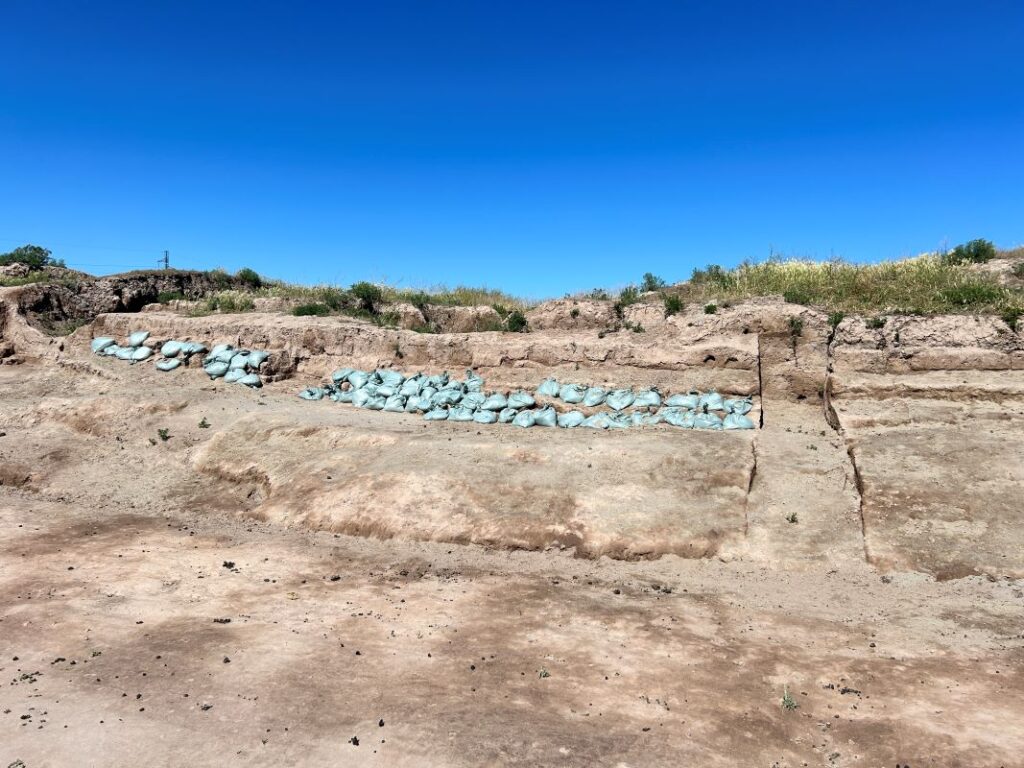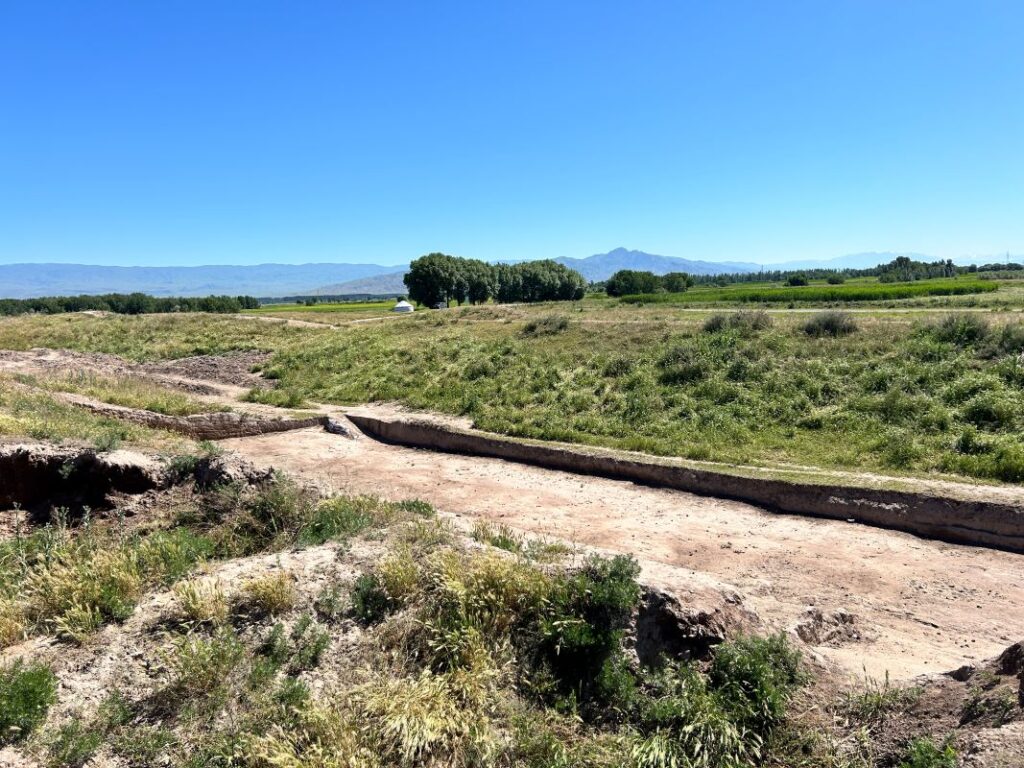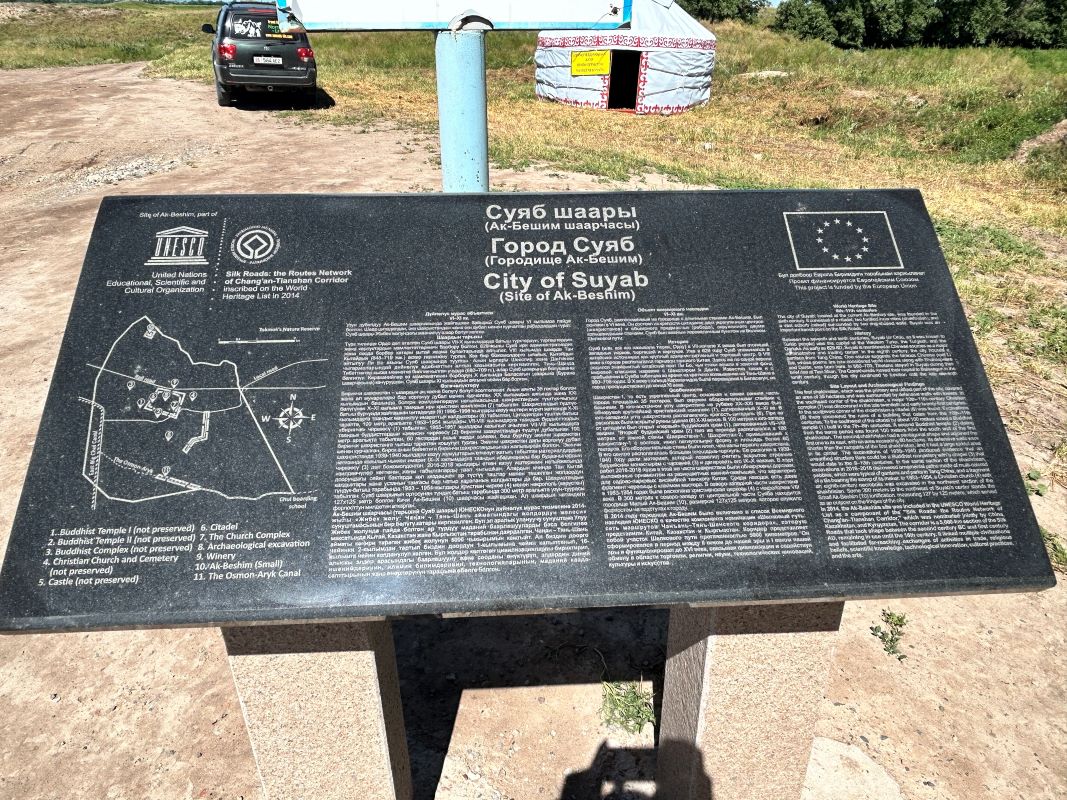Ak-Beshim: The Ancient Silk Road City of Kyrgyzstan
The ancient city of Ak-Beshim, located near the modern-day village of Ak-Beshim in Tokmok in the Chui Valley of Kyrgyzstan, represents one of the most significant archaeological sites in Central Asia. Ak-Beshim, which translates to “White Hill” in Kyrgyz, was an important urban center of the ancient Silk Road, flourishing from approximately the 3rd to the 11th century AD. Its strategic position along the trade routes connecting the East and West contributed to its prominence as a major commercial and cultural hub during its peak.
The Ak-Beshim settlement is the remains of an ancient city, eight kilometers south of the city of Tokmok, located in the Chui region, on the outskirts of the village of Ak-Beshim. The settlement was discovered in 1894 during archaeological excavations by V.V. Bartold, who suggested that he had found the capital of the Karakhanid state – the city of Balasagun, built in the 10th-12th centuries. In the center of the settlement is the shakhristan or city core, with a fortified citadel, hidden behind a fortress wall with the remains of watchtowers. Subsequent excavations carried out by A.N. Bershtam in 1938-1940, L.R. Kyzlasov in 1953-1954, as well as subsequent studies led to the conclusion that the city has a more ancient history. In recent years, excavations have been carried out by archaeologists from Japan with the help of the Japanese government.


The ruins of Ak-Beshim are situated about 60 kilometers west of Bishkek, the capital city of Kyrgyzstan. The exact address of the site is not typically designated with a conventional street address, but it is accessible via routes leading from Bishkek to the nearby village of Ak-Beshim. The site’s coordinates approximately align with 42.9783° N latitude and 74.5550° E longitude.
Ak-Beshim’s layout reflects its importance as a major Silk Road city. The city features remnants of substantial defensive walls, residential quarters, and commercial areas. Notable structures include a large fortress, which provided protection and oversight for the city’s bustling marketplace. Archaeological excavations at Ak-Beshim have uncovered a variety of artifacts, including pottery, coins, and inscriptions that offer insights into the city’s vibrant trade and cultural exchanges.
One of the most significant discoveries at Ak-Beshim is its impressive Buddhist monastery complex, which indicates the presence of diverse religious practices and cultural influences in the city. This monastery, along with other religious and civic structures, underscores Ak-Beshim’s role as a melting pot of different cultures and traditions during its time.
The site of Ak-Beshim, though not as well-preserved as some other ancient cities, continues to be an important location for archaeological research and historical study. The discoveries made at Ak-Beshim contribute to a broader understanding of the Silk Road’s impact on Central Asian history, illustrating the region’s historical significance as a crossroads of civilization and culture.
In summary, Ak-Beshim stands as a testament to the historical richness of Kyrgyzstan’s past, offering valuable insights into ancient urban life, trade, and cultural exchanges along one of the world’s most famous trade routes.





